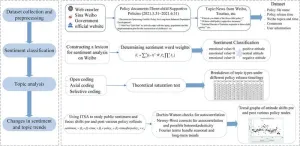Blinatumomab (Blincyto, Amgen, Inc.) is a Bispecific T-cell Engager (BiTE®) immuno-oncology therapy that targets CD19 surface antigens on B cells. BiTE® molecules fight cancer by helping the body's immune system detect and target malignant cells. On June 14, 2024, supported by E1910's demonstration of improved survival in patients in MRD-negative remission, the US Food and Drug Administration (FDA) approved blinatumomab for use in CD19-positive Philadelphia chromosome-negative (also known as BCR::ABL1-negative) B-cell precursor acute lymphoblastic leukemia (B-ALL) adult and pediatric patients in the consolidation phase of multiphase chemotherapy.
Previously, blinatumomab was approved for patients with relapsed/refractory disease (approved in 2014) and those in first or second complete remission who tested positive for MRD at ≥0.1% leukemic cells in bone marrow (approved 2018). Blinatumomab has a unique toxicity profile characteristic of BiTE® therapies that require close monitoring, with hospitalization recommended upon treatment initiation.
The current approval was based, in large part, on the strength of the E1910 preliminary data. The New England Journal of Medicine publication now presents the final analysis of the 3-year survival data.
"Our study shows that adding blinatumomab to consolidation chemotherapy keeps patients in remission and improves their survival. Based on what we found, this approach is the new standard of care for B-cell precursor acute lymphoblastic leukemia patients who achieve an MRD-negative remission after initial chemotherapy," said lead investigator Mark R. Litzow, MD, a Professor of Medicine (now retired) at the Mayo Clinic.
Many adults with this type of cancer relapse despite having no MRD detected by sensitive techniques after initial treatment. An MRD test uses tissue collected during a bone marrow biopsy. It looks for any cancer cells that were not killed by the cancer treatment.
B-cell precursor acute lymphoblastic leukemia is an aggressive (fast-growing) type of blood cancer in which too many B-cell lymphoblasts (immature white blood cells) are in the bone marrow and blood. It is a subtype of acute lymphoblastic leukemia, itself a rare disease in adults (American Cancer Society).
Trial Overview
"E1910 is the first randomized trial to demonstrate that we are able to improve the survival of adults with B-cell precursor acute lymphoblastic leukemia who are in complete remission, including by sensitive MRD testing, and establishes the addition of blinatumomab immunotherapy to standard consolidation chemotherapy as a treatment that will change clinical practice," said co-author Selina M. Luger MD, FRCPC. Dr. Luger is Chair of the ECOG-ACRIN Leukemia Committee and a Professor of Medicine at the University of Pennsylvania's Perelman School of Medicine and Abramson Cancer Center in Philadelphia.
The primary endpoint of this phase 3 trial was overall survival from the time of randomization to chemotherapy consolidation + blinatumomab or chemotherapy alone in MRD-negative patients. In total, 224 patients between the ages of 30 and 70 years with newly diagnosed BCR::ABL1-negative B-cell acute lymphoblastic leukemia achieved an MRD-negative remission with induction chemotherapy, and were randomized equally into the two groups.
The control group received four cycles of consolidation chemotherapy alone. The experimental group received two cycles of blinatumomab, then two cycles of chemotherapy, another cycle of blinatumomab, another cycle of chemotherapy, and then a fourth cycle of blinatumomab. In each blinatumomab cycle, patients received a continuous intravenous infusion around the clock for 4 weeks, followed by a 2-week break.
Participants could have a stem cell transplant from a suitable donor if their treating physician thought it was in their best interest. Patients in both groups went on to receive classic POMP maintenance chemotherapy for about 2 years. This step increases the chances of keeping the disease in remission over many years.
Results
After a median follow-up of 43 months, the study found a significant improvement in overall survival for BCR::ABL1-negative B-cell precursor acute lymphoblastic leukemia patients between the ages of 30 and 70 who had achieved an MRD-negative remission and received blinatumomab plus chemotherapy in consolidation compared to chemotherapy alone. Median overall survival was not reached in either treatment arm. The 3-year overall survival rate among patients in the blinatumomab + chemotherapy arm was 85% versus 68% in the chemotherapy-only arm.
Similar results were seen for relapse-free survival, with the median relapse-free survival in either arm not being reached. The 3-year relapse-free survival was 80% for the blinatumomab + chemotherapy arm and 66% for the chemotherapy-only arm.
"Although the trial was not powered to analyze subgroups of patients, the greatest benefit was seen in patients between the ages of 30 and 55," said Dr. Litzow.
For toxicity, MRD-negative patients receiving blinatumomab + chemotherapy experienced treatment-related non-hematologic toxicities at the following rates: 43% Grade 3 (severe), 14% Grade 4 (life-threatening), and 2% Grade 5 (death). The rates on the chemotherapy-only arm were 36% Grade 3, 15% Grade 4, and 1% Grade 5.
As expected, side effects affecting the neurologic system were more common in patients receiving blinatumomab + chemotherapy, at 23%, compared to 5% in patients receiving chemotherapy alone. The medical teams caring for the patients were able to manage them in most instances.
There were 17 deaths in the blinatumomab + chemotherapy arm: eight from relapse and nine from non-relapse causes, largely from infection. There were 40 deaths in the chemotherapy-only arm: 31 from relapse, seven from non-relapse causes, also largely from infection, and two from unknown causes.
Study E1910 was designed and conducted independently of the pharmaceutical industry with public funding. The ECOG-ACRIN Cancer Research Group led the trial with funding from the National Cancer Institute (NCI), part of the National Institutes of Health. Other NCI-funded network groups participated in the trial. Amgen, the manufacturer of blinatumomab, provided the drug and support through a Cooperative Research and Development Agreement with the NCI.
About ECOG-ACRIN
The ECOG-ACRIN Cancer Research Group (ECOG-ACRIN) is an expansive membership-based scientific organization that designs and conducts cancer research involving adults who have or are at risk of developing cancer. The Group comprises nearly 1400 member institutions and 21,000 research professionals in the United States and around the world. ECOG-ACRIN is known for advancing precision medicine and biomarker research through its leadership of major national clinical trials integrating cutting-edge genomic approaches. Visit ecog-acrin.org, follow us on X @eaonc, Facebook, LinkedIn, Instagram, and YouTube, or call 215.789.3631.
###
END






